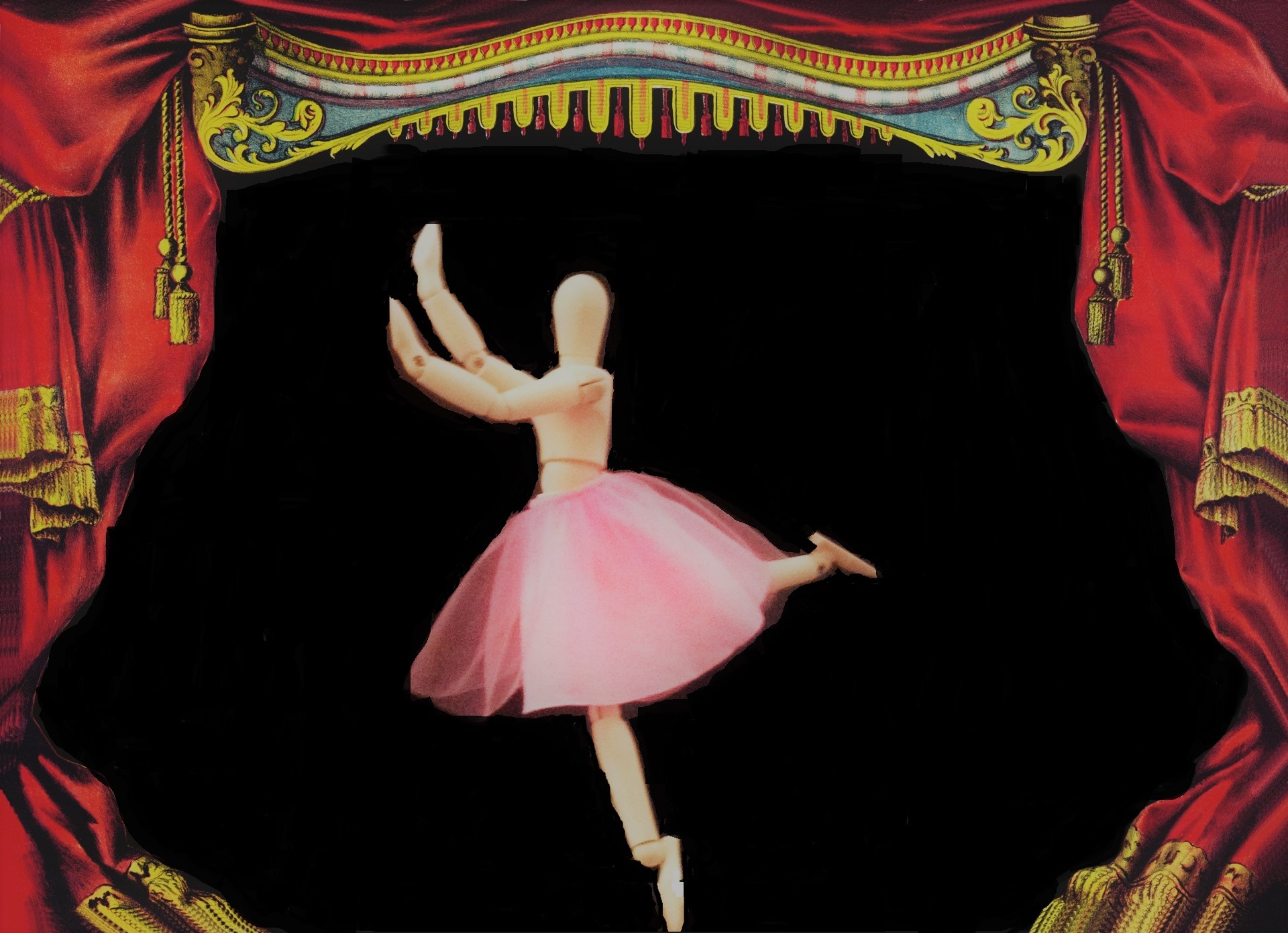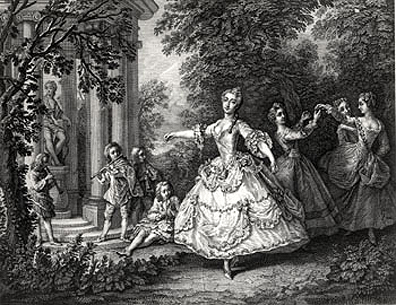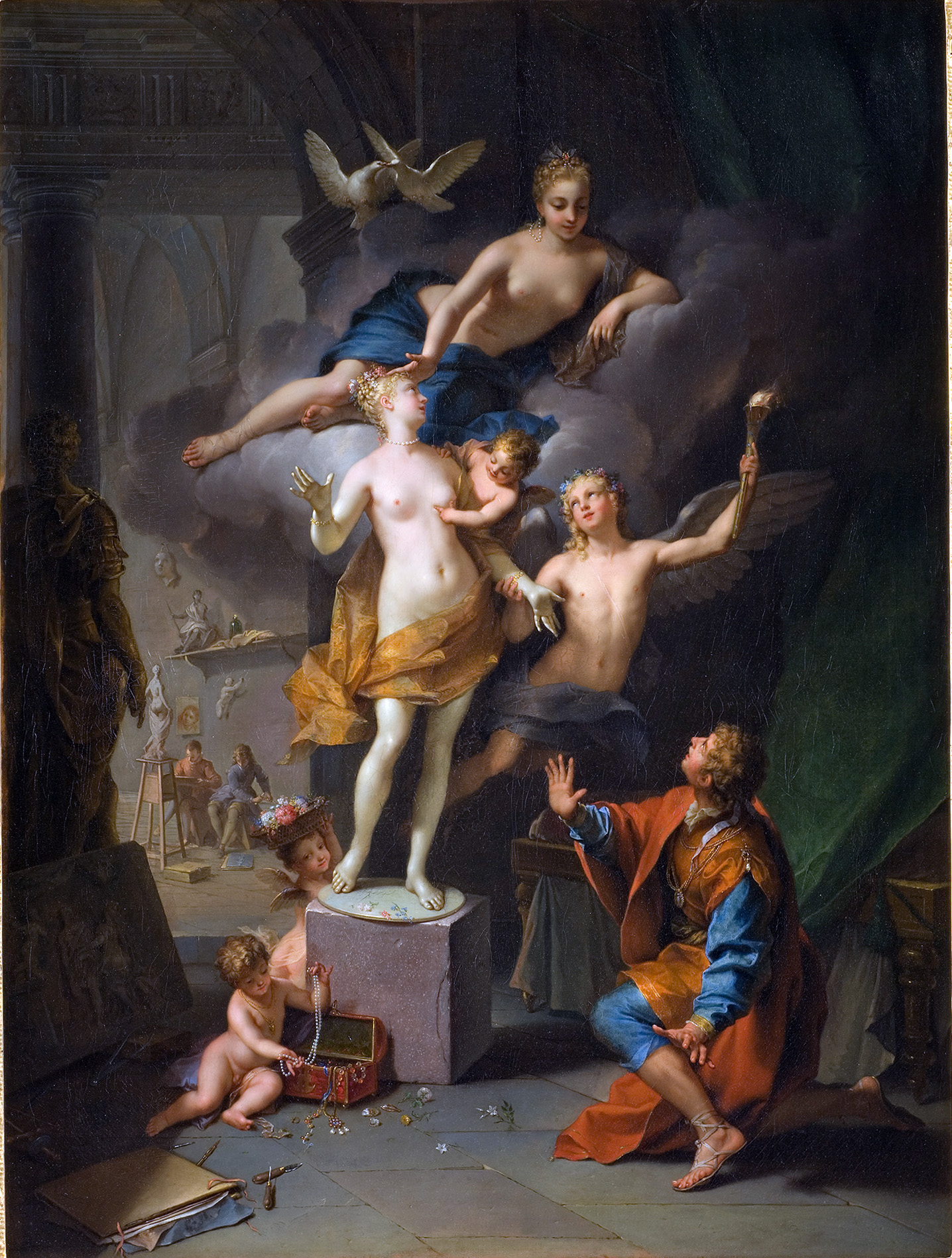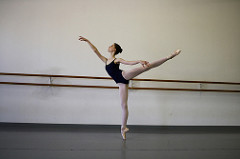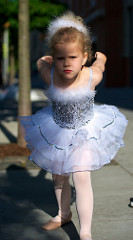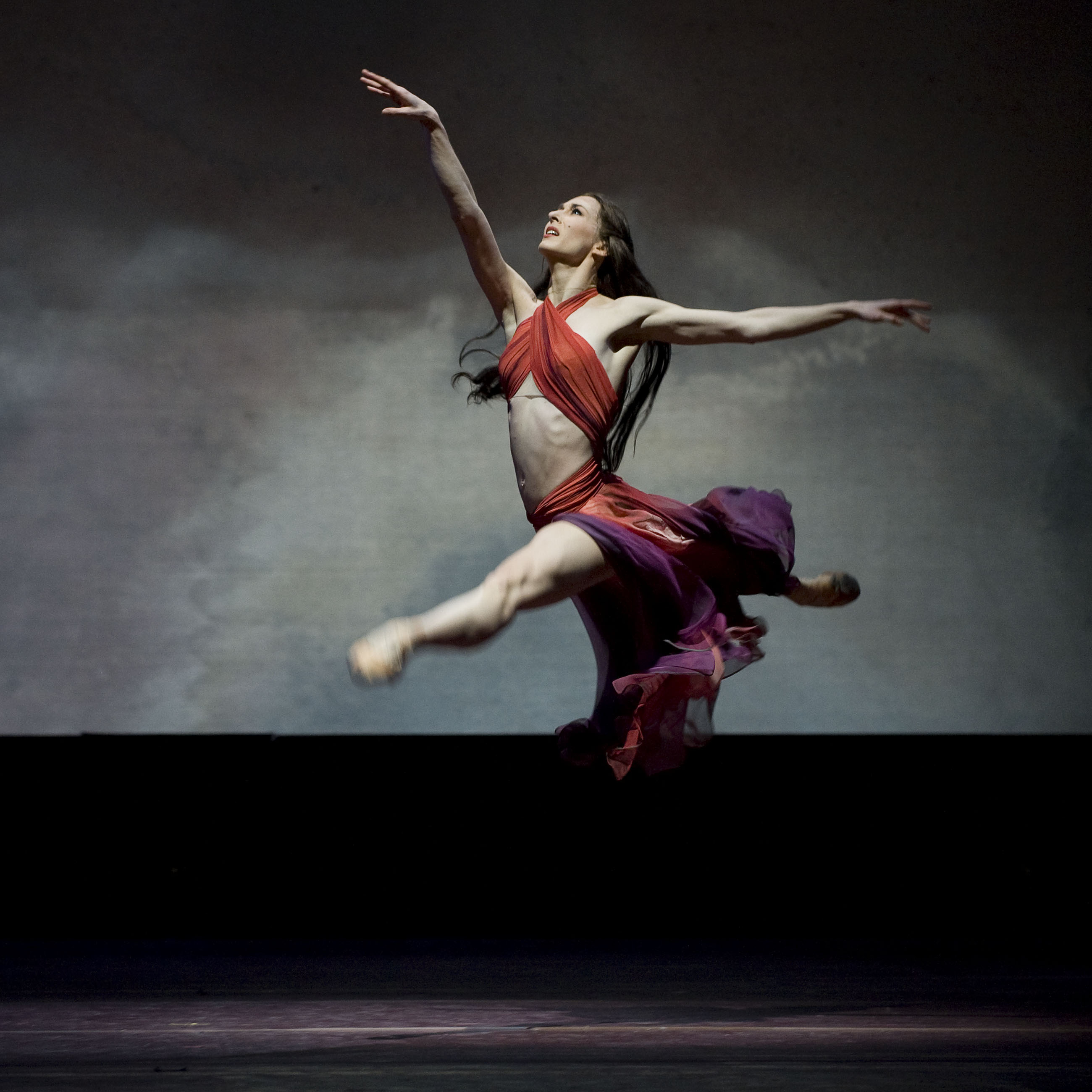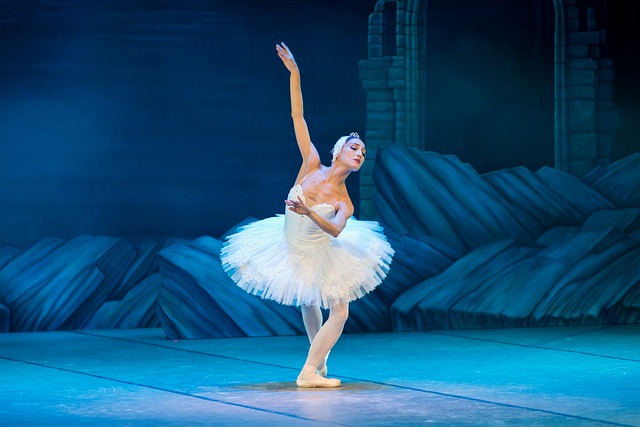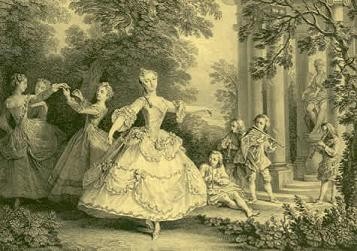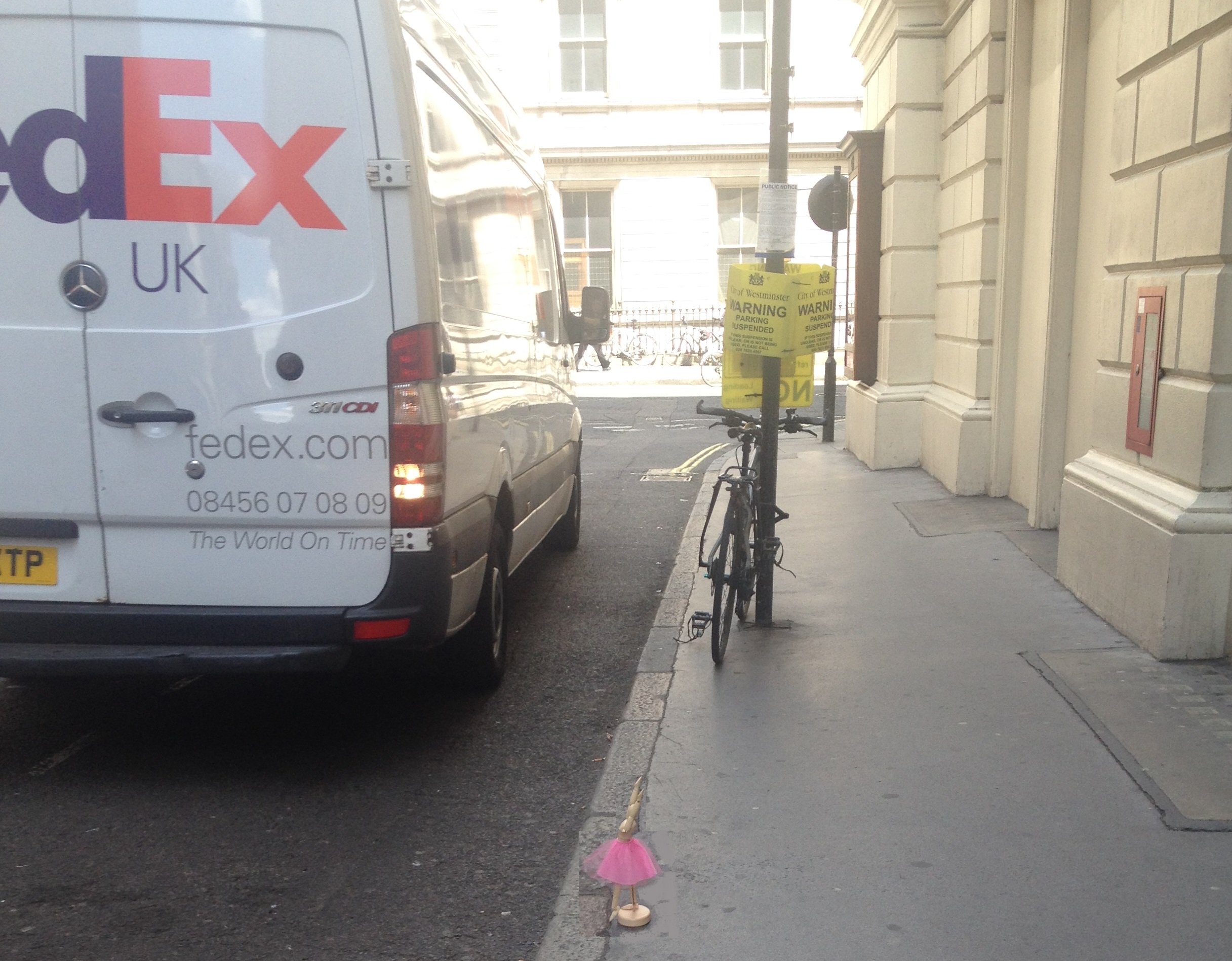Storytelling through Ballet and the Woman Behind It
From Londonhua WIKI
Revision as of 16:42, 20 June 2017 by Mthatfalvi (talk | contribs)
Storytelling through Ballet and the Woman Behind It
|
| |
| by | Mary Hatfalvi |
|---|---|
Contents
Abstract
The goal for this milestone was to do an in depth research report on the first recorded ballet in London, Pygmalion which opened in 1734 at the Covent Gardens, and the story of the famous dancer & choreographer Marie Sallé. This research looked at how this ballet, choreographed by Marie Sallé, started a new approach of ballet style and performance in London that is used today and also briefly looked at ballet history in London and what is is today. In conclusion, this milestone then told the story of 'Little Marie' through her ballet poses and the places she visits throughout London. To help me with this milestone, I used scholarly researched material as well as my prior experience in ballet performance from lessons taken in kindergarten to 3rd grade. The dance experience helped me with ballet storytelling techniques used in 'Little Marie' 's story.
Introduction
Ballet has been used for theatrical performance since the early 16th century. Ballet gives another form of dimension to theater in the way that brings grace and emotion into the story. London in particular has been the home to famous ballet groups such as the Royal Ballet. However, when did ballet start? When and where was the first ballet performed in London? How did ballet become the form of theatrical storytelling it is today? The answers can be found through the first record ballet in London Pygmalion and the dancer & choreographer behind its success, Marie Sallé.
The goal of my research was to find the details for this first ballet. I wanted to dig deep into the life of Marie Sallé and how she influenced ballet as we know it to be today. Past research has been done on Marie Sallé and her influence through this performance. However, I looked into not just Marie Sallé and Pygmalion, but also today's ballet. I looked at the different ballet poses & positions used, general ballet history in London, places ballet has performed in London, and then concluded with a children's story written using ballet poses to enhance the story. The story of my doll whose name is 'Little Marie' also shows the different places that London ballet has performed at. I used my knowledge in ballet performance from my years as a little ballerina to help with the research and ballet poses/positions described in the background.
Section 1: Background
To begin our journey through the beautiful art of ballet in London, we will start with a brief early history about London ballet and then go into detail about Pygmalion.
Ballet in London
History
Beginning
The beginning of ballet did not start in London. According to historians, Ballet originally started in Renaissance Italy and then moved to France before it was seen in England.[1] In the 17th century according to the Victoria and Albert museum Origins of Ballet article, elaborate dances would be performed in European courts and were used to celebrate marriages or to show wealth and power.[2]
According to the Victoria and Albert Museum website,"the performances were a mixture of spoken word, music, dance and pantomime. They contained ceremonial processions with spectacular technical effects and extravagant costumes. The stories were inspired by the myths of ancient Greece and Rome or were based on themes such as the four seasons, the natural world or foreign lands. Costumes were imaginative and fantastical, decorated with symbols that helped the audience to recognize the characters in the story. Movement was often limited by the size of these costumes."[2] Pictured on the right is an example of the elaborate costumes that were worn.
England, before the 20th century, was not recorded to have a school for ballet dance. Foreign performers would come and perform ballet in places in London such as the Covent Gardens. One of the first ballet performances recorded in London's history was Pygmalion, which opened in 1734 at the Covent Gardens.
Pygmalion - The First Recorded Ballet in London
Performance Summary
From the Oxford Guide of Classical Mythology of Arts, this first ballet performance was shown on the 14th of February 1734, with Marie Sallé as the character Galatea and the ballet's choreographer.[3] The music was by Jean-Joseph Mouret. According to the Oxford Guide, the ballet plot was about Pygmalion, king of Cyprus, who carved a statue of his ideal woman and fell in love with her. [4] Aphrodite, the goddess of love, then brought the sculpture to life and Pygmalion married her. The name Galatea was the name given to Pygmalion's statue for this interpretation and other performances [4] This performance was put on when the Royal Opera House was called Covent Gardens before the Royal Opera House's second fire. According to an article on Marie about her performance, she wore a muslin costume with her hair down and un-ornamented which emphasized her belief that the costume should portray the character. [5]
Dramatic Elements
The dramatic elements for this performance can be described at best through a review that was written by a London corespondent of the Mercure de France:
"This is the theme. Pygmalion enters his studio accompanied by his sculptors, who execute a characteristic dance, mallet and chisel in hand. Pygmalion bids them throw open the back of the studio which, like the forepart, is adorned with statues. One in the middle stands out above all the others and attracts the admiration of everyone. Pygmalion examines it, considers it, and signs. He puts his hands on his feet, then on the body; he examines all the contours likewise the arms, which he adorns with precious bracelets. He places a rich necklace about about the neck and kisses the hands of his beloved statue. At last he becomes enraptured with it; he displays signs of unrest and falls into a reverie, then prays to Venus and beseeches her to endow the marble to life.
Venus heads his prayer; three rays of light appear, and to the surprise of Pygmalion and his followers, the statue , to suitable music, gradually emerges from its insensibility; she empresses astonishment at her new existence and at all of the objects which surround her.
Pygmalion, amazed and transported, holds out his hand for her to step from her position; she tests the ground, as it were, and gradually steps into the most elegant poses that a sculptor could desire. Pygmalion dances in front of her as if to teach her to dance. She repeats after him the simplest as well as the most difficult and complicated steps; he endeavours to inspire her with the love which he feels, and succeeds".[6]
Sallé in her performance as Galatea dressed "...in this entrée without a pannier, without a skirt, with her hair all disheveled and no ornament on her head; dressed neither in a corset nor a petticoat, but in a simple muslin robe arranged as a close-fitting drapery, in the manner of a Greek statue.”[6] The tone for this ballet was romantic.
Reviews
At the time, ballet dancers would dress in extravagant costumes with corsets. This did not give freedom for much movement. It was unheard of what Marie Sallé did in this performance. Marie was complemented in many reviews for her success & genius for this decision as well as her performance. According to a review from the Mercure de France, "You cannot doubt,...the prodigious success of this ingenious ballet, so skilfully presented".[6] According to several resources, Marie even got to perform this ballet for the royal family and court of the day.[7]
According to an encyclopedia article, the ballet Pygmalion has been cited as the forerunner of Jean Georges Noverre's ballet d'action, which means a ballet that told a story.[8] Overall, this performance is known as a breakthrough in ballet history because of the new costumes style and storytelling style of performance it introduced.
Early 20th Century Growth
The beginning of ballet in London, according to resources about Britain Ballet, started in 1920 when Édouard Espinosa and Philip Richardson founded the Royal Academy of Dancing.[9] In 1926, Ninette de Valois opened the Academy of Choreographic Art, which became known eventually as the Royal Ballet. The real growth of ballet performances though started after WWII in London. According to an article about WWII ballet, during WWII the Vic Wells Ballet was sent off on a tour of the Netherlands, France and Belgium where they performed for the solders fighting in battle. [10] The performers become local heroes surviving the tough conditions with the solders. After that, many places in London started their own ballet companies and ballet grew to be the beautiful dance that is shown in theaters in London today.
Today
Today, ballet is one of the most beautiful forms of theatrical storytelling. It is known world wide for it's beauty, grace and enchantment in it's performance. Part of my deliverable is about looking at today's ballet; where it is performed and the ballet poses that enhances the storytelling aspect.
Performance Places
One of the beautiful aspects about ballet is that it has been performed in so many places in London. The home of the Royal Ballet is the Royal Opera House where numerous ballets have been performed since the 18th century. The Place, from 1969, has been a place where Contemporary Ballet has had a home in London. The Royal Albert Hall has also been a theater where ballet troupes such as the Birmingham Royal Ballet and the English National Ballet have made an appearance in. Public gardens have been used as ballet performance venues as well as public ballet lessons places. It is almost impossible for me to name all of the places ballet has been performed at. All I can say is that ballet can be performed anywhere.
Storytelling Poses
The ballet poses used in today's ballet are numerous. However mention in this section some important and most interesting poses that are used in ballet storytelling today. Most of these poses do not have formal names. When researching some of these specific ballet poses, I could not find formal names for them. But the beauty of ballet is not the positions used but what you interpenetrate them to mean through storytelling ballet. I picked positions that I thought best described the feelings I wanted to portray in my story of 'Little Marie'. The descriptions for these poses are based on observation and common ballet knowledge.
Pose 1
This pose shown on the right shows a classic ballet pose known as an Arabesque. According to a ballet terms site, the Arabesque is defined as a position on one leg with the other leg raised behind the body and extended in a straight line.[11] This position can be used to describe feelings such as happiness.
Pose 2
Our next pose gives the feeling of being scared. In my research I found no formal name given for this position. Both arms are extended upward and the body is tightened.
Pose 3
Pose 3 pictured to the right in my findings doesn't have a formal name either. The ballerina's feet are in fourth position with the extended foot pointing forward. The arms are extended straight backward and the body is leaned forward. This position portrays the feeling of anger.
Pose 4
This next pose (Pose 4) is performed in almost every ballet. It is a pose done in gymnastics also. Both of the legs are shown in a split position and the dancer is jumping. This is a hard position for ballerinas and gymnasts to do.
Pose 5
This joyful ballet pose is called an Arabesque that has both arms extended gracefully to the side. This pose can be used to portray a joyful feeling.
Pose 6
This last ballet pose described is used in the ballet story Swan Lake. This uses the fourth position with the back foot extended. One arm is extended upward and the other is bend forward. This pose shows the beauty and grace in the movement of ballet today.
Marie Sallé
Story
Marie Sallé was born 1707 in Paris, France as the daughter of a tumbler.[12] Marie was one of two children who both had a talent for dance. According to a biography on Marie, she made her first debut in 1718 at the St. Laurent's Fair in an opera-comique by Lesaye called La Princesse Carisme.[5]
In 1725, Marie went to London and performed in the production named Love's Last Shift. She stayed in London dancing in many productions, then returned to Paris where she then started at the Paris Opera. However, she quickly returned to London because she was ridiculed for her revolutionary ideas in Paris. She stayed in Paris from 1728 to 1733 then left to go to Covent Garden (now known as the Royal Opera House) where she choreographed and performed two of her greatest performances, Pigmalion and Bacchus and Ariadne which, according to resources, were both shown in the spring of 1734. [13]
After her season at Covent Garden, she renewed her contract with John Rich and danced for many operas & dance interludes between acts in plays. She eventually went back to Paris and after a salary raise, returned to the Paris Opera. During her time there, she produced, choreographed and performed in many different ballets which were all wildly praised for her talent, style & grace.
Sallé retired from the opera in 1740 with her final opera performance in Les Talens Lyriques. She died on July 27th, 1756. [14]
Style & Techniques
According to Encyclopedia Britannica, Salle performed expressive, dramatic dances during a period when displays of technical virtuosity were more popular.[14]
She believed in the style of dance and costume that is expressive & related to the theme. Her dance according to an English translation of Noverre's Letters on Dance was descried as the following: "I was enchanted with her dancing. She was possessed of neither brilliancy nor the technique common to dance nowadays, but she has replaced that showiness by simple and touching graces; free from affectation, her features were refined, expressive, and intelligent. Her voluptuous dancing displayed both delicacy and lightness; sh did not stir the heart by leaps and bounds"[12] Her costumes were the style of the story. In Pygmalion, she had a costume of a Greek robe to look like a Greek statue. In another performance, Marie dressed as a man to fit the character she was portraying. She was a force to be reckoned with through her ideas and influence.
Influence
Marie Sallé was influential in her dance interpretation and costume. She was the first woman to choreograph the ballets in which she performed in. She integrated music, costumes, and dance styles with the themes of her ballets, a form that was not officially used in ballet until the ballet reformation in the late 18th-century according to the Victoria & Albert Museum article of Origins of Ballet.[14] She wanted dancing especially to be an expression of the story and not a traditional dance. Her influence in dance was immediately felt and long lasting especially with her Pygmalion. According to a chapter from a book on Woman' s Influence,1748 and 1751 productions of Pygmalion used many connections to Sallé's original dance choreography from her Pygmalion.[13] According to a chapter on Marie from a book on Women's Influence: " A Paris revival of Riccoboni’s Pigmalion dating from 26 March 1735 may have been seen by Franz Hilverding (1710–68), who could certainly have studied Sallé herself in some of her pantomimic scenes for Rameau’s opéra-ballets."[13]
Besides her choreography, Marie Sallé is known for her influence in ballet costumes that are more commonly know in today's ballet. Sallé’s performed in a time when dancers’ costumes were not realistic and limited to movement. She wanted costumes to be more flowing and look as they were am part of the story. In the ballet Pygmalion, was were is official started her reformation in costume by wearing a Greek robe to look like a Greek statue. Sadly though, in Handel’s Alcina (1735) her dress as a man was not looked on as highly as her other costume choices. The Abbé Prévost wrote about Sallé as Cupid that she, “took it upon herself to dance ... in male attire. This, it is said, suits her very ill and was apparently the cause of her disgrace.” [15]
Despite the horrible responses, she is still know for taking the risk in costume reformation.
Overall, Sallé’s role as a dance teacher, choreographer and entrepreneur of her ballet reformation gave her a place in historical England that will never be taken away.
Section 2: Deliverable
I wanted to create a way to portray ballet around London while telling a story. My friend came up with the idea of a doll called 'Little Marie' who would go around London doing ballet. 'Little Marie' was a miniature human manikin with a pink tutu skirt. She was meant to represent a little ballerina who dreams about going to London someday. Using the different poses and places described in the background, I will tell the story of 'Little Marie' and her journey through London.
The Story of 'Little Marie'
Once upon a time, there was 'Little Marie'. 'Little Marie' loved to dance. She lived in New York but dreamed about going to London. One day her mother surprised her with nothing other than a ticket to London! She jumped for joy! Her dreams were about to come true.
When she arrived in London, she wanted to visit every place that ballet has ever been in London. However, her mother told 'Little Marie' that she could not visit every place in London. 'Little Marie' though wanted to try. "I only have one day mama" she said. "Please let me try." Her mother agreed.
To start her day in London, 'Little Marie' went to the Royal Opera house. She remembered hearing stories of ballerinas from around the world performing at this place. While there, she becomes afraid of the incoming traffic of London in every direction.
After almost getting run over by a double deaker bus, 'Little Marie' then took the tube to the Royal Albert Hall. When she arrived, her mother surprised her with tickets to see Swan Lake performed by the English National Ballet. 'Little Marie' was so excited! Swan Lake was 'Little Marie's favorite ballet.
Right near the Royal Albert Hall are the Kensington Palace gardens. After Swan Lake, 'Little Marie' went to the gardens to dance. She pretended she was Odette from Swan Lake with her company of swans hiding from Rothbart the evil sorcerer.
'Little Marie' 's mother then takes her to one last place, which is called The Place. 'Little Marie' heard of the contemporary ballet dancers that performed there. When she is there, she pretends she is a ballerina performing in Swan Lake. Now she is Odile who tricks the prince into declaring his love for her instead of Odette.
When the day is done, 'Little Marie' becomes sad. Her mother was right. She did not get to see everything in London. 'Little Marie' begged her mother to stay longer or come back someday. Her mother said "You will and when you do, you will be a real ballerina on the stage of the Royal Opera House." On the ride home from her day in London, Marie dreamed about one day becoming a real ballerina in London.
Description of Story
The story's plot is about a little ballerina named "Little Marie' who wanted to visit London and then is able to go to London for one day. The story goes through the places in London where ballet is performed while telling the story of the experiences 'Little Marie' has. The story ends with Marie dreaming about becoming a real ballerina in London someday. This story's plot was based loosely on my trip to London. Angelina Ballerina was an inspiration to the style of the story. This story was meant to represent ballet storytelling in the form of a children's story. I wanted to have the pictures of the ballet poses to be in a way that told the story.
All of the poses used in this story are described in the background section in detail. The poses were chosen in no particular order for the story in a way that would make the story flow better and to give it enchantment and life. For example, the gardens were, in my opinion, the perfect place to have Marie to demonstrate a swan lake pose. The Place picture was a picture that I wanted to show the most emotional ballet pose since the Place is where contemporary ballet is performed. Contemporary ballet is a form of ballet that portrays a lot of emotion. The event of a swan lake performance at the Royal Albert Hall was based on a real performance of Swan Lake that was shown in the summer of 2016. Because of the time that production was put on, the time frame for this story was then based last year in June 2016, during a sunny day.
Conclusion
Ballet overall has been an important form of storytelling for a long time. It gives the emotion and style that sometimes can't be shown through normal theatrical performances. Marie Sallé shows us today that ballet can be used to show so many different ways to telling a story. Personally, I believe Marie gives strength for ballet revolutionaries who want to give ballet more meaning and purpose in modern day performance. My story of 'Little Marie' is meant to give honor to ballet today that was shaped by Marie and her performance of Pygmalion in 1734. In conclusion, ballet is a theatrical art that will continue to change and grow with stories of the future.
Future research could begin with a more in depth look into the history of ballet in England. When researching ballet in England, it was hard to find resources and articles on the specific subject. Another research project could look into all of the specific terms and poses used in ballet today. For this milestone, I could not find specific names for many of my ballet poses used in my deliverable. It would be great for someone to make a glossary with pictures of all of the positions used in modern ballet today.
References
- ↑ Stuart, M., Kirstein, L., & Dyer, C. (1952). The classic ballet: basic technique and terminology (1st ed.). NY: Knopf. p. 4.
- ↑ 2.0 2.1 Victoria and Albert Museum, Digital Media webmaster@vam.ac.uk. (2013, April 25). The Origins of Ballet. Retrieved June 06, 2017, from http://www.vam.ac.uk/content/articles/o/origins-of-ballet/
- ↑ Pygmalion (1734), accessed at http://www.apgrd.ox.ac.uk/productions/production/13155 <5 June 2017>
- ↑ 4.0 4.1 Reid, J. D., & Rohmann, C. (1993). The Oxford guide to classical mythology in the arts 1300-1900s (Vol. 2). New York: Oxford University Press.
- ↑ 5.0 5.1 Andros, D. (1991, May). Marie Salle, (1707-1756). Retrieved June 05, 2017, from http://michaelminn.net/andros/biographies/salle_marie/
- ↑ 6.0 6.1 6.2 Mercure de France, A pril 1734, 770–72.
- ↑ Chazin-Bennahum, J. (2005). Reformers and Philosophes as Forerunners of the Revolution in Fashion. In The lure of perfection: fashion and ballet 1780-1830 (pp. 35-64). London: Routledge.
- ↑ "Sallé, Marie (1707–1756)." Women in World History: A Biographical Encyclopedia. Retrieved June 06, 2017 from Encyclopedia.com: http://www.encyclopedia.com/women/encyclopedias-almanacs-transcripts-and-maps/salle-marie-1707-1756
- ↑ Ballet in Britain. (n.d.). Retrieved June 07, 2017, from http://www.the-ballet.com/britain.php
- ↑ Mackrell, J. (2007, February 15). Judith Mackrell on the Royal Ballet during the second world war. Retrieved June 07, 2017, from https://www.theguardian.com/stage/2007/feb/15/dance
- ↑ Atlanta Ballet. (n.d.). Ballet Terms and Positions. Retrieved June 09, 2017, from https://www.atlantaballet.com/resources/ballet-terms-and-positions
- ↑ 12.0 12.1 Beaumont, C. W. (1934). Marie Sallé. In Three French dancers of the 18th century: Camargo, Sallé, Guimard (pp. 18-25). London: C.W. Beaumont.
- ↑ 13.0 13.1 13.2 McCleave, S. (2008). Marie Sallé, a Wise Professional Woman of Influence. In L. Brooks (Ed.), Womens work: making dance in Europe before 1800 (pp. 160-182). Madison, WI: University of Wisconsin Press.
- ↑ 14.0 14.1 14.2 The Editors of Encyclopedia Britannica. ( 1998, July 20). Marie Salle. Retrieved June 05, 2017, from https://www.britannica.com/biography/Marie-Salle
- ↑ English translation in Otto Erich Deutsch, Handel: A Documentary Biography (London: Adam and Charles Black, 1955), 390–91.
External Links
Marie Salle Bio
Victoria & Albert Museum - Origins of Ballet
Atlanta Ballet - Ballet Terms and Positions
Image Gallery
Mademoiselle Sallé
Artist 'Garnier' After Nicolas Lancret
Year 1730
Attributed to After Nicolas Lancret [Public domain], via Wikimedia Commons
Link https://commons.wikimedia.org/wiki/File%3AMarieSalle.jpgPygmalion adoring his statue
Artist Jean Raoux
Year 1717
Attributed to Jean Raoux [Public domain], via Wikimedia Commons
Link https://commons.wikimedia.org/wiki/File%3APygmalion_(Raoux).jpgAlexandra Ansanelli as Ondine - Royal Ballet - London - UK
Author JRPHOTO
Year 2008
Attributed to By JRPHOTO (Own work) [CC BY-SA 3.0 (http://creativecommons.org/licenses/by-sa/3.0)], via Wikimedia Commons
Link https://commons.wikimedia.org/wiki/File%3AAlexandra_Ansanelli_in_Ondine_Royal_Ballet.jpgMeredith
Year 2011
Attributed to Melissa Dooley, via flickr
Link https://www.flickr.com/photos/mkdooley/5314937082Costume Ballet Performance Performing Dance Female
Attributed to Canon EOS 5d Mark IIi camera with shoot mode: EF70-200mm f/4L IS USM - 106.0mm · ƒ/4.0 · 1/250s · ISO 6400, via Max Pixel freegreatpicture.com
Link http://maxpixel.freegreatpicture.com/Costume-Ballet-Performance-Performing-Dance-Female-1643081angry ballerina 3
Author Josh Engroff
Year 2012
Attributed to Josh Engroff, via flickr
Link https://www.flickr.com/photos/engroff/7155382010Nadja Sellrup as Esmeralda in "Ringaren i Notre-Dame" ("The Hunchback of Notre-Dame"), a 2009 ballet at the Royal Swedish Opera.
Author Alexander Kenney
Year 2009
Attributed to By Alexander Kenney [CC BY 3.0 (http://creativecommons.org/licenses/by/3.0)], via Wikimedia Commons
Link https://commons.wikimedia.org/wiki/File%3ARingaren_i_Notre-Dame_ballet_2009.jpgCarlotta Grisi in Giselle
Year 1841
Location Paris, France
Attributed to By The original uploader was Mrlopez2681 at English Wikipedia (Transferred from en.wikipedia to Commons.) [Public domain], via Wikimedia Commons
Link https://commons.wikimedia.org/wiki/File%3AGiselle_-Carlotta_Grisi_-1841_-2.jpgBallerina, Ballet Swan Lake
Author nikidinov
Attributed to CC0 Public Domain Free for commercial use, via pixabay
Link https://pixabay.com/en/ballet-swan-lake-ballerina-dance-2124651/Portrait of Marie Salle dancer and choreographer of the XVIII century
Year 1730s
Attributed to See page for author [Public domain], via Wikimedia Commons
Link https://commons.wikimedia.org/wiki/File%3ASalle1.jpgLittle Marie dancing for joy
Author Mary Hatfalvi
Year 2017
Location Crawford Passage, London UKLittle Marie afraid of the incoming traffic
Author Mary Hatfalvi
Year 2017
Location Royal Opera House London, UKLittle Marie excited to go to a Swan Lake performance
Author Mary Hatfalvi
Year 2017
Location Royal Albert Hall London, UKLittle Marie dancing in Swan Lake
Author Mary Hatfalvi
Year 2017
Location Kensington Gardens London, UKLittle Marie dancing in Swan Lake part 2
Author Mary Hatfalvi
Year 2017
Location The Place London, UKLittle Marie's dream
Author Mary Hatfalvi
Year 2017
Location Crawford Passage, London UK

